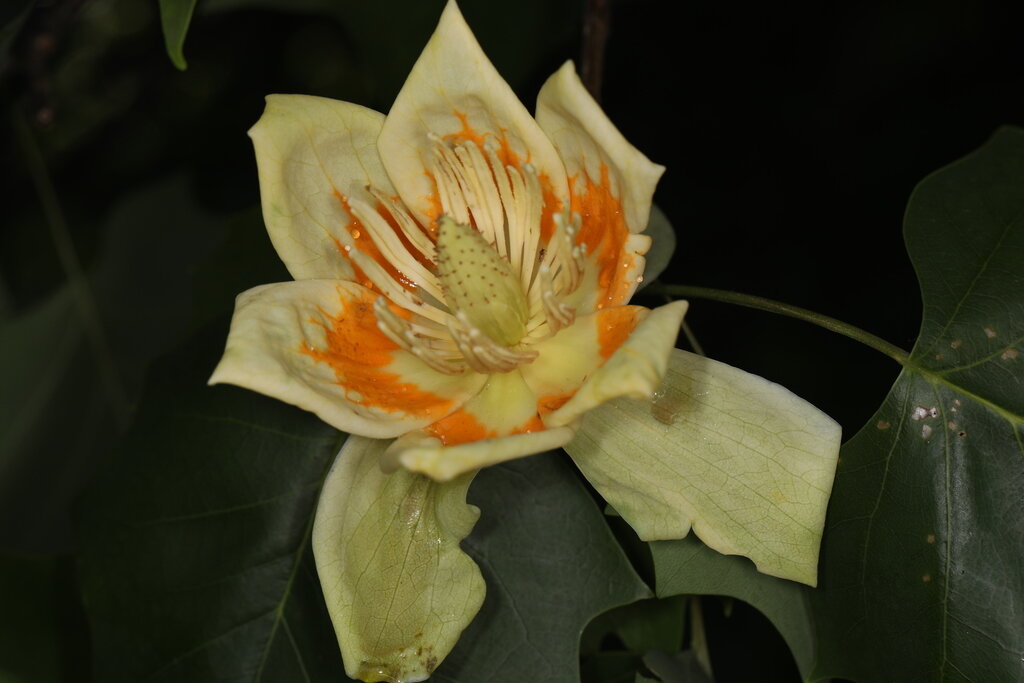Tulip Poplar
© John P. Friel · some rights reserved
Tennessee’s State Tree
The Tulip poplar (Liriodendron tulipifera), or yellow poplar, is a species of tree found throughout the eastern portion of North America. The tulip poplar is a tall, deciduous tree that is hardy in our region of Tennessee, Georgia, and North Carolina. It has a globular shape, grows to 60 to 90 feet tall (maximum of 150 feet) and 30 to 50 feet wide. It has large star-shaped leaves and flowers that have a yellow hue to them along with an orange throat. These trees need full sun, medium amounts of water, and require low maintenance. In addition to being an excellent shade tree for yards and gardens, it tolerates both deer and rabbits, clay soils, wet soils, and can even tolerate being near black walnut trees, something few other trees can tolerate. The tulip poplar is found in rich, moist soils, often near stream banks.
Uses
Perhaps the most frequent use of this species is as a shade tree in yards and gardens. Of particular interest is that this species will shade a gathering area at one residence in the summer and allow full sun in the winter when its leaves are no longer present. Because of the hydrostatic pressure created in the roots, this species is not recommended as a street tree. The wood of this tree has been used in the production of furniture, boats, toys, general lumber, and the production of plywood.
Protection Status
The tulip poplar has no protection status in North America.
Interesting Information
While this tree is referred to as “poplar” or tulip, it has no relationship with either poplars or tulips. The tulip poplar is actually most closely related to the various magnolias in our area.
Native Americans used the trunks of tulip poplar in the making of dugout canoes.
This is the state tree of not only Tennessee but also Kentucky and Indiana.
The genus name for this species comes from the Greek word “leirion,” meaning lily, and “dendron,” meaning tree, for the flowers. The species epithet, or second name, “tulipifera”, refers to the shape of the flowers, looking like a tulip.
The leaves of this species turn a brilliant, bright yellow in the autumn. It is nearly insect and disease-free.





